Skin Cancer Check Sydney
The Skin Cancer and Cosmetic Clinic are the experts in detecting and preventing potential Skin Cancer with our Ai Speclipse Skin Cancer Check Laser.
How To Check For Skin Cancer Without A Biopsy?
When performing your Skin Cancer Check, patient safety is our number one consideration. Doctors at our clinic will assess your body to see if there is any pigmentation on your skin that is showing potential signs of malignancy (which means the presence of cancer).
We do this using the latest A.I. laser skin cancer detection Spectroscope by ‘Speclips’. This revolutionary technology can seek out benign & malignant lesions with more than 95% accuracy, Thus avoiding unnecessary biopsies and improving skin cancer pickup rates.
To learn more about the A.I. Spectroscope by ‘Speclips’ click to watch the video.
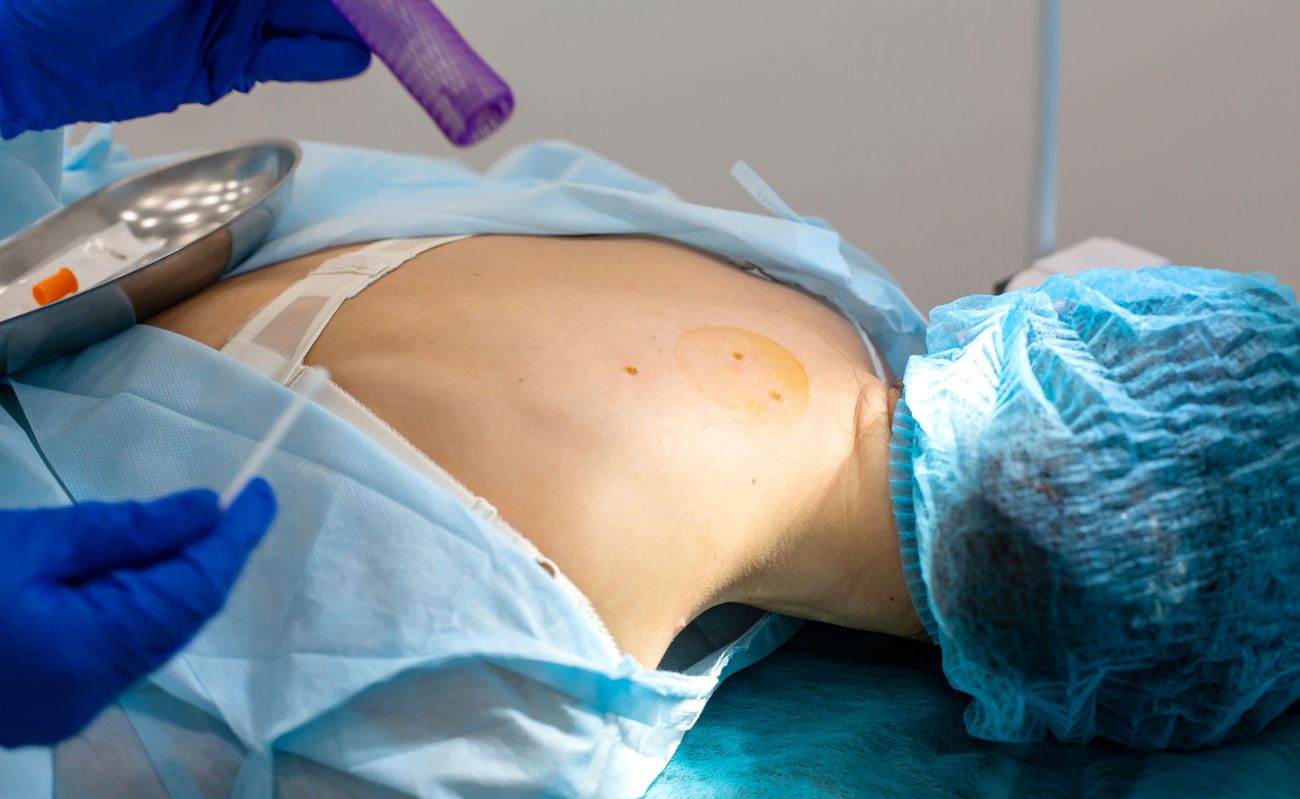
Melanoma Skin Cancers:
Melanomas are the most dangerous of skin cancers and have to be managed quickly and carefully. They may arise from an abnormal mole or in normal skin. There is often a history of a severe sunburn episode in the past (maybe 5-10 years ago).
For suspicious lesions, traditional surgical excision with primary closure with suturing is the method of choice and the whole excised mole is sent for histopathological examination.
Non-Melanoma Skin Cancer:
In the non-melanoma skin cancer group, there are the Squamous Cell Carcinomas (which are more dangerous) and the Basal Cell Carcinomas (the most common and least dangerous). These are usually due to cumulative ultraviolet damage to the skin over many years.
Each method has different benefits, so depending on the type of Skin cancer and where it is situated, we will recommend the most suitable options for your needs. (See below for a more detailed description of techniques available)
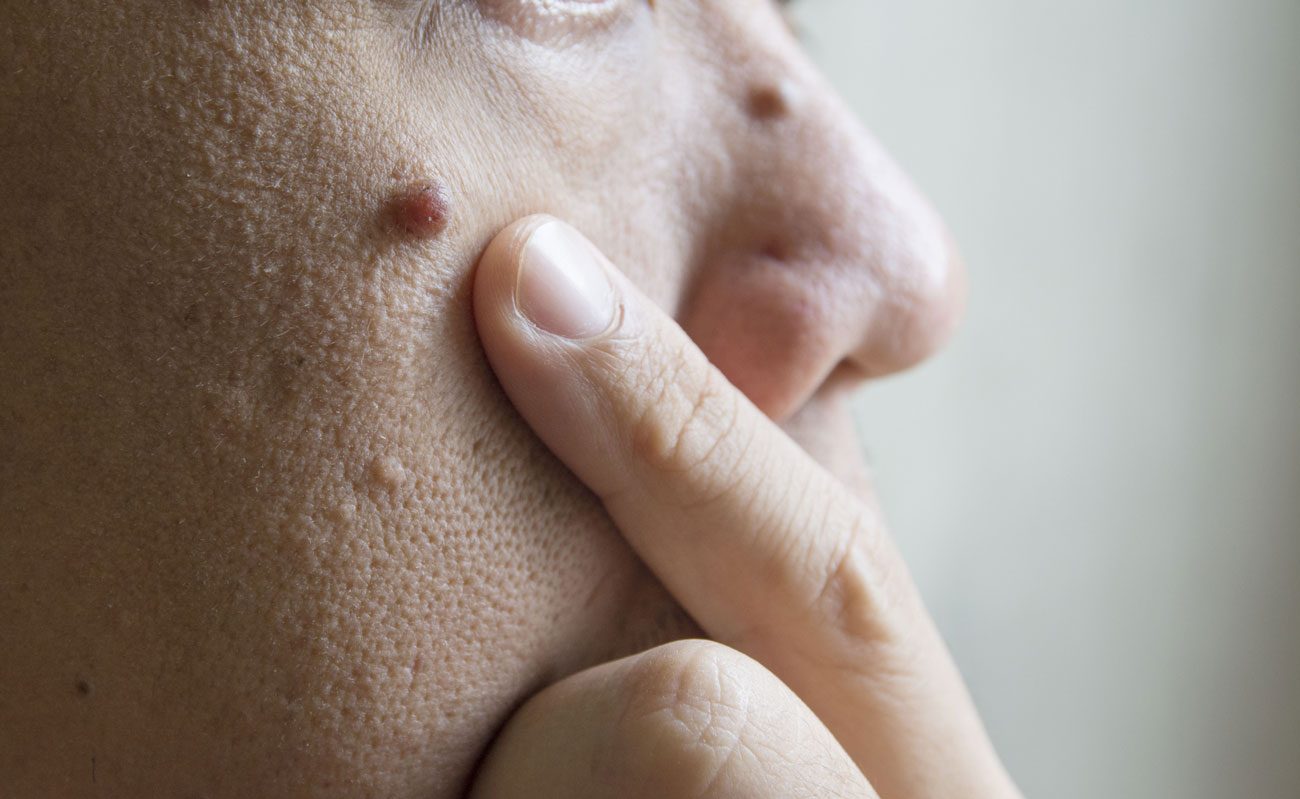
Detected Cancer from Skin Cancer Check
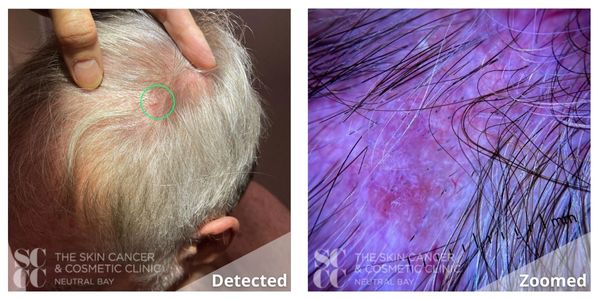
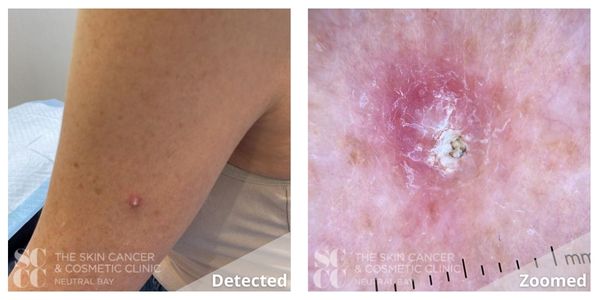
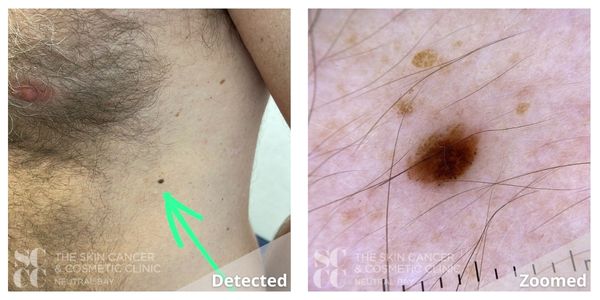
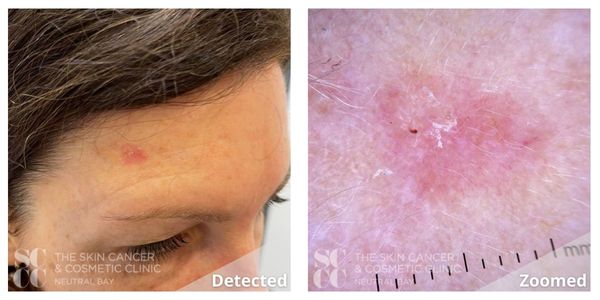
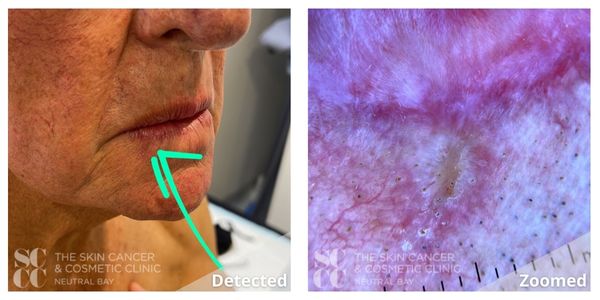
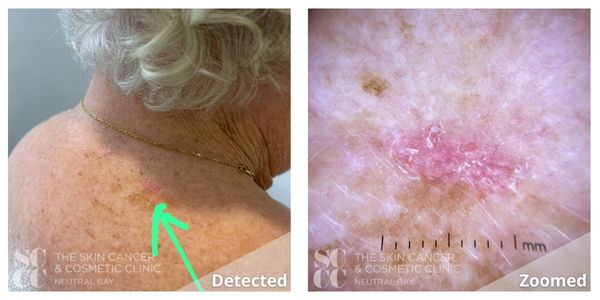
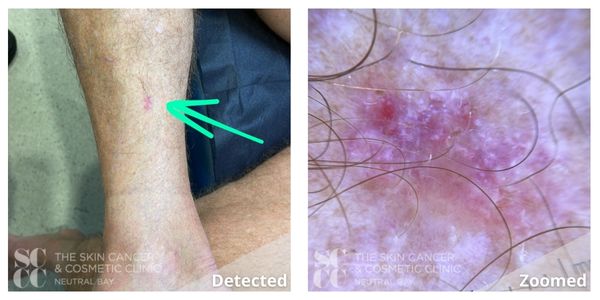
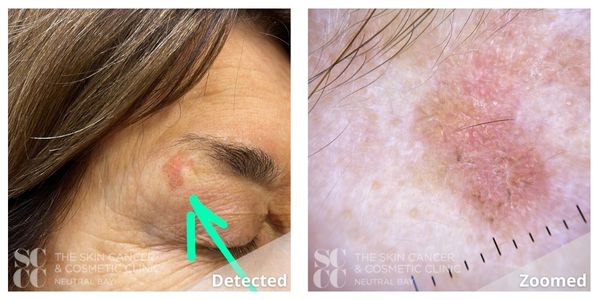
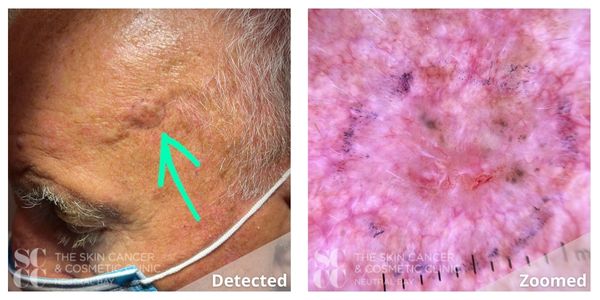
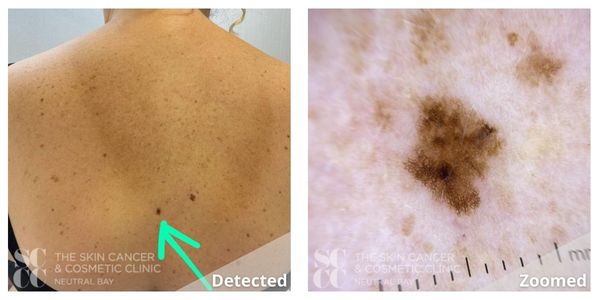
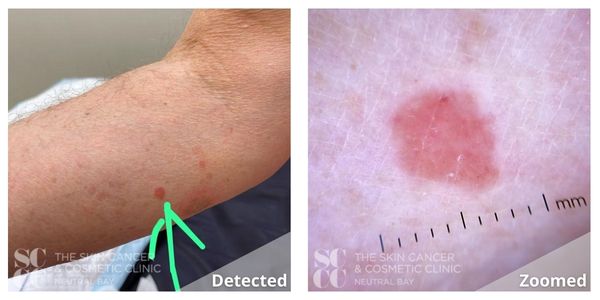
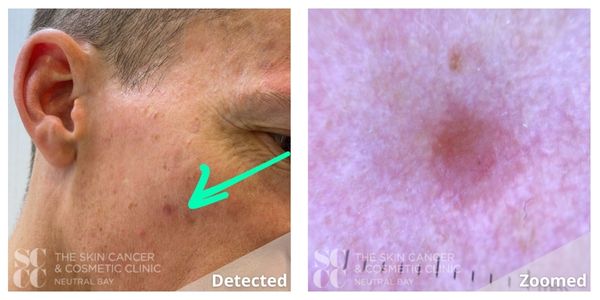
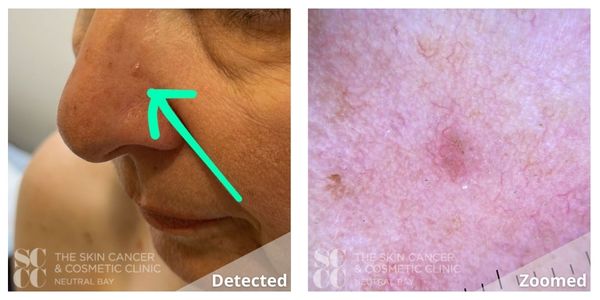
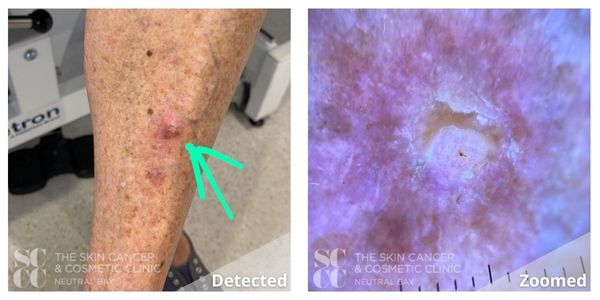
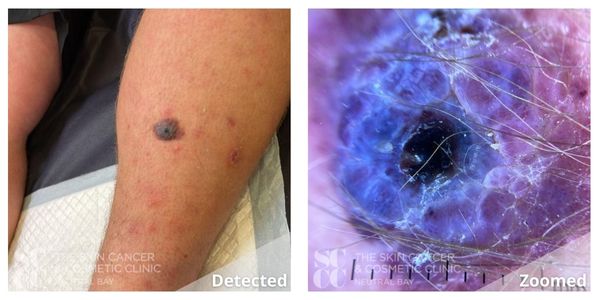
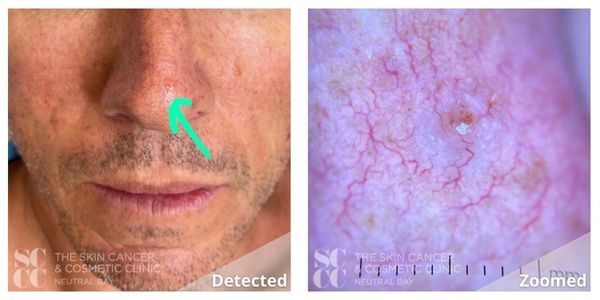
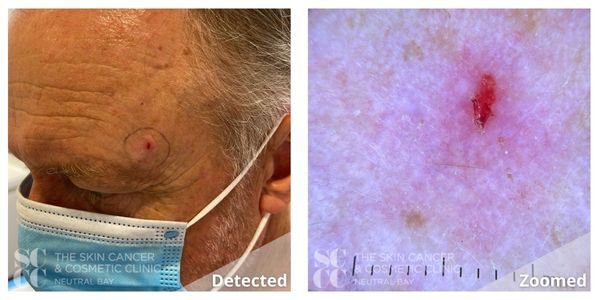
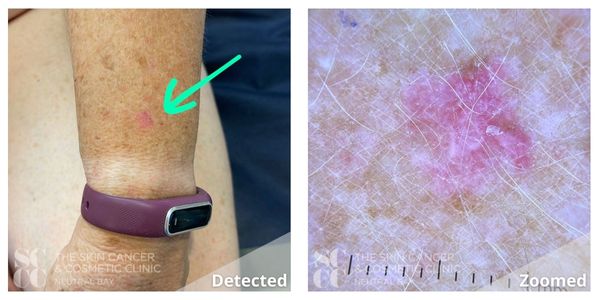
How Much Does A Skin Cancer Check Cost?
The cost of having a skin cancer check in Sydney is quite inexpensive. Where the prices increase dramatically is when the clinic requires you to pay for multiple biopsies to determine whether or not the suspicious lesion is showing signs of malignancy. Thankfully our A.I. Skin Cancer Check helps our patients save money by dramatically reducing the number of biopsies we request for patients because of the lasers’ 95% accuracy in detecting malignant melanoma.
Frequently Asked Questions about Checking for Skin Cancer
Skin Cancer Facts
Skin cancer affects young and old, it does not discriminate. Here in Australia, we have one of the highest rates of skin cancer in the world.
- More than 60% of Australians will receive a skin cancer diagnosis before the age of 70.
- More than 2000 Australians are dying of skin cancer each year.
- More than 2,500 skin cancer treatments occur in Australia every day
Why is it important to get checked for Melanoma early with a full body skin cancer check?
When detected early (in the in-situ stage), surgical excision is almost curative. The longer you wait, the more likely the Melanoma can invade deeper and ultimately spread into the lymphatics, bloodstream, and other organs in the body.
How we check for melanoma skin cancer using AI?
There is “pattern recognition AI” and “AI used Laser Induced Plasma Spectroscopy”. In pattern recognition AI, we take total body photography and dermoscopic images of suspicious lesions for future comparison. When patients return for a skin check the following year, total body imaging is done again. The AI would match up all your moles and pick out those lesions that have shown changes.
Suspicious lesions with dermoscopic images get benched marked with the global dermoscopic database, and the AI would let us know the % of similar lesions that turned out benign or malignant. If there is a particular suspicious lesion that we want an immediate assessment of, we can use Speclipse AI laser device, which uses AI to analyse the biochemical composition of the lesion via Laser Induced Plasma Spectroscopy. The device’s AI analysis provides us with a LIPS score between 0 to 10. The higher the LIPS score, the more abnormal the lesion and the more likely it is malignant.
What are the common signs and symptoms of skin cancer?
For Melanoma: Change in size, shape or colour of a pigmented lesion.
For Squamous Cell Carcinoma: tender raised volcano-shaped papule. When touched, When touched or pressed, the lesion is tender and often, the patient describes it as a needle prick sensation.
Basal Cell Carcinoma: non-tender shiny pink or ivory white lesion. Sometimes when the cancer has invaded deeper, there is often contact bleeding experienced by the patient. When examining the lesion under the dermatoscopy, there are often characteristic telangiectatic blood vessels seen.
What’s involved in a skin cancer check?
The patient is undressed down to the underwear. The doctor will examine your skin from head to toe, looking for the above common skin cancers, pre-cancerous sun spots (Actinic Keratoses) and also note existing benign lesions such as seborrhoeic keratoses, benign naevus (normal moles). The pre-cancerous sun spots are often treated with cryotherapy when identified, while lesions suspected of skin cancer need a biopsy under local anaesthetic. More advanced skin checks might include AI-total body imaging and the use of Laser Induced Plasma spectroscopy to analyse lesions real-time.
How often should a full body skin cancer check be done?
A full skin check should be done about once a year for normal Australians but can be more frequent for those individuals who have frequent skin cancers, Lots of moles or new sunspots, a past history of melanoma or a strong history of melanomas.
Schedule Your Skin Cancer Check Before Another Day Goes By
Your health is not something that should be put on the back burner. Click the link below, and on the next page, you can request a consultation.
Or call us directly on (02) 9904 2211
